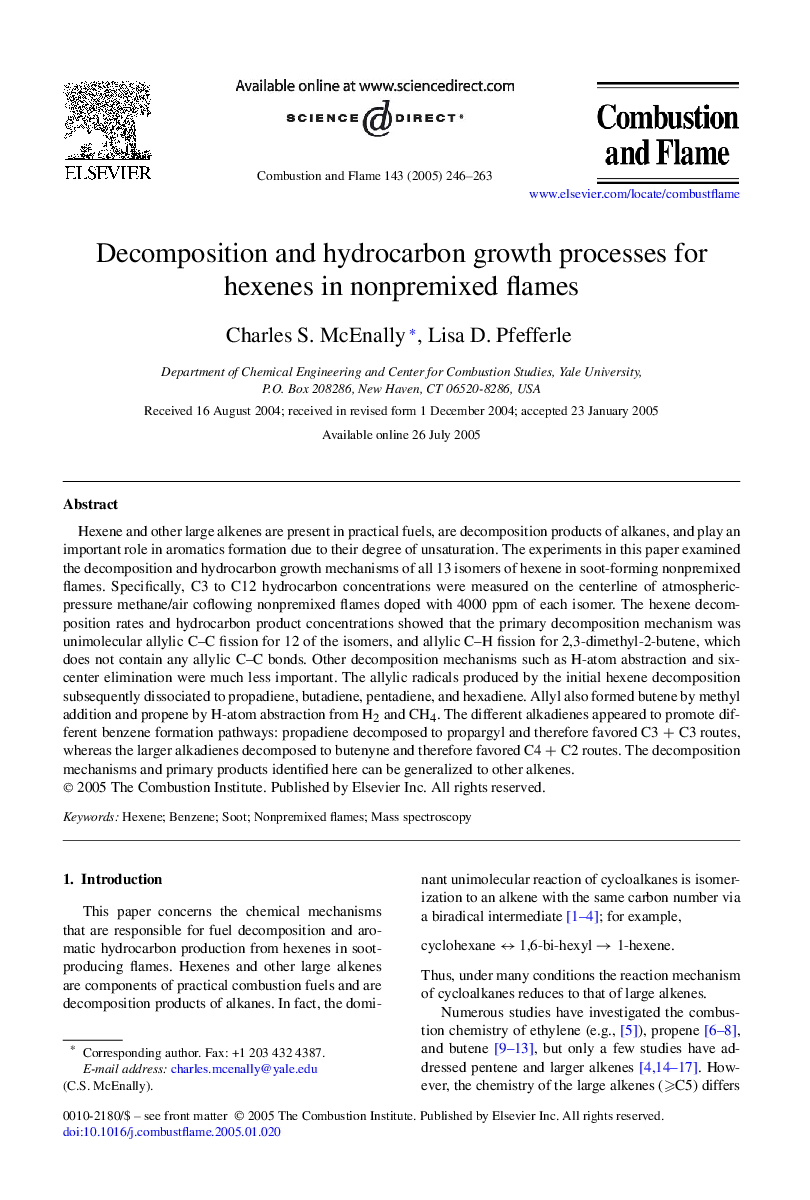| Article ID | Journal | Published Year | Pages | File Type |
|---|---|---|---|---|
| 10264516 | Combustion and Flame | 2005 | 18 Pages |
Abstract
Hexene and other large alkenes are present in practical fuels, are decomposition products of alkanes, and play an important role in aromatics formation due to their degree of unsaturation. The experiments in this paper examined the decomposition and hydrocarbon growth mechanisms of all 13 isomers of hexene in soot-forming nonpremixed flames. Specifically, C3 to C12 hydrocarbon concentrations were measured on the centerline of atmospheric-pressure methane/air coflowing nonpremixed flames doped with 4000 ppm of each isomer. The hexene decomposition rates and hydrocarbon product concentrations showed that the primary decomposition mechanism was unimolecular allylic CC fission for 12 of the isomers, and allylic CH fission for 2,3-dimethyl-2-butene, which does not contain any allylic CC bonds. Other decomposition mechanisms such as H-atom abstraction and six-center elimination were much less important. The allylic radicals produced by the initial hexene decomposition subsequently dissociated to propadiene, butadiene, pentadiene, and hexadiene. Allyl also formed butene by methyl addition and propene by H-atom abstraction from H2 and CH4. The different alkadienes appeared to promote different benzene formation pathways: propadiene decomposed to propargyl and therefore favored C3 + C3 routes, whereas the larger alkadienes decomposed to butenyne and therefore favored C4 + C2 routes. The decomposition mechanisms and primary products identified here can be generalized to other alkenes.
Related Topics
Physical Sciences and Engineering
Chemical Engineering
Chemical Engineering (General)
Authors
Charles S. McEnally, Lisa D. Pfefferle,
